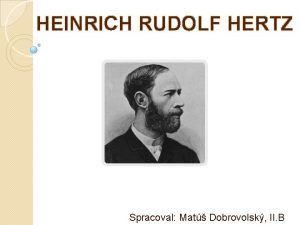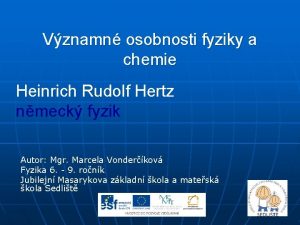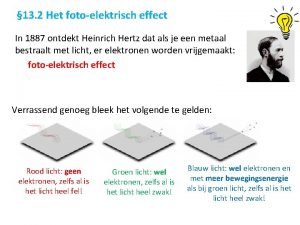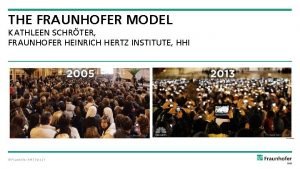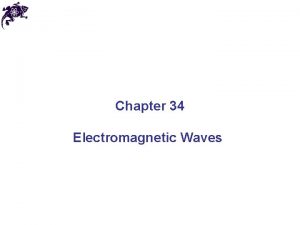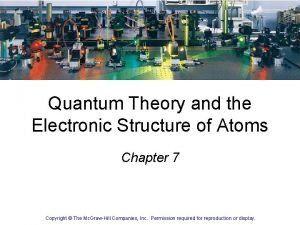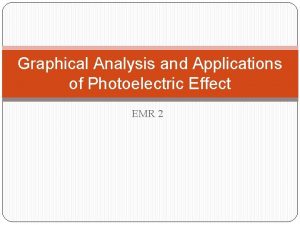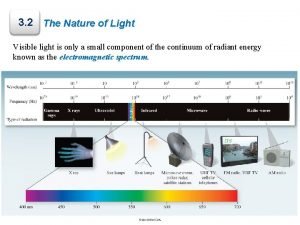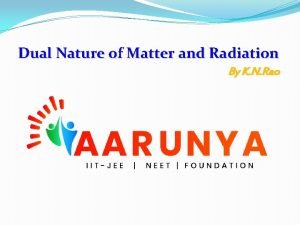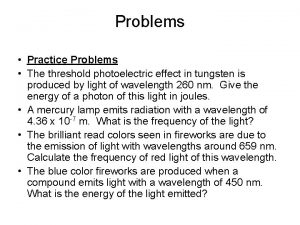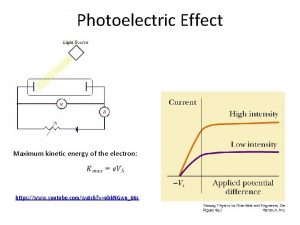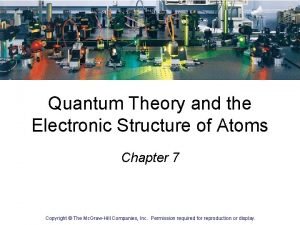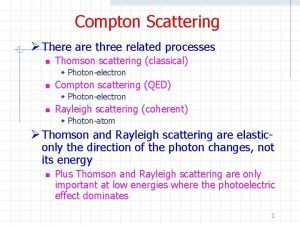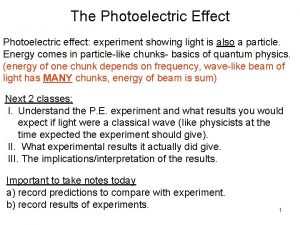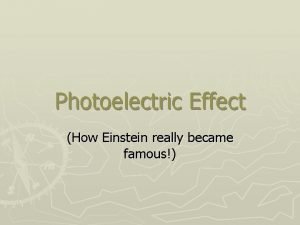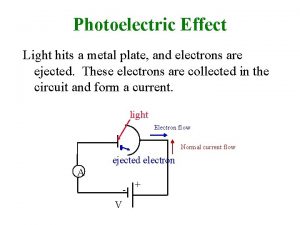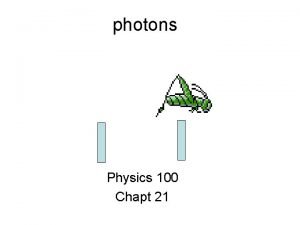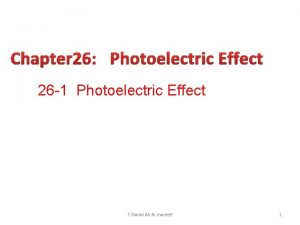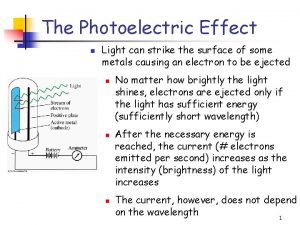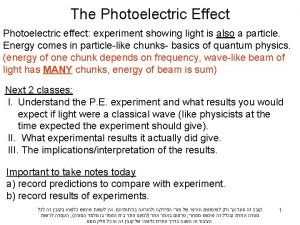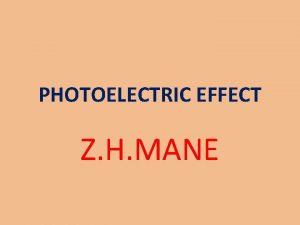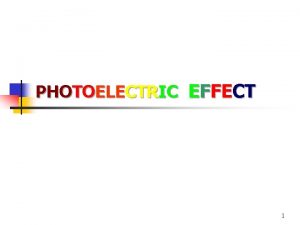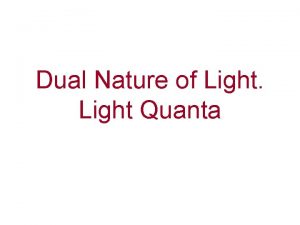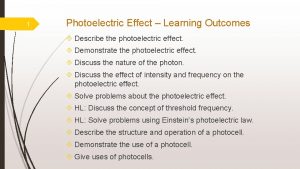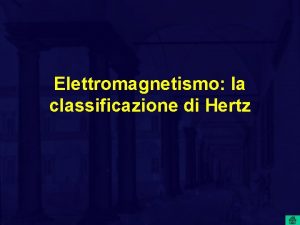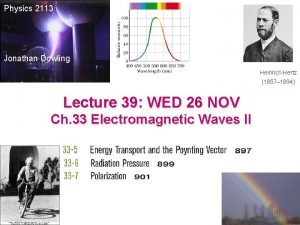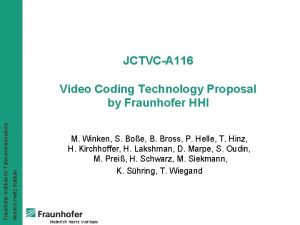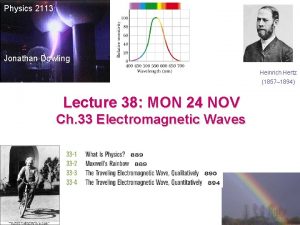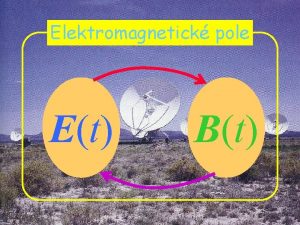PHOTOELECTRIC EFFECT The experiment of Heinrich Hertz In


















- Slides: 18

PHOTOELECTRIC EFFECT

The experiment of Heinrich Hertz In the year 1887 Through glass a weak spark, through quartz a stronger spark Conclusion: When illuminated with UV light, the electrons escape from the surface of the metal more easily

Assumptions from classical (wave) theory 1) Number of ejected electrons is proportional to the intensity of the incident light 2) Whether electrons are ejected is dependent on the intensity of light 3) The maximum kinetic energy of the electrons depends on the intensity of the light 4) At low intensities, some time is needed in order to eject electrons

Testing for photoelectic effect We measure the volt-ampere characteristics

Conclusions about the photoelectric effect 1) The number of ejected electrons is proportional to the intensity of the incident light 2) Whether electrons are ejected is dependent on the frequency of the light 3) The maximum kinetic energy of the electrons depends o n the frequency of the light 4) At low intensities, electrons are ejected immediately

. . . from previous lessons Energy is radiated in quanta. Max Planck (185 8 -1947)

Explanation Energy is radiated and absorbed in quanta PHOTONS Albert Einstein (1879 -1955)

Photons • Light quanta • Always moving at the speed of light • Energy • Simultaneously a wave and a particle


What is the role of photons in the photoelectric effect?

Work function New physical quantity! Energy required for the electron to leave the metal Property of the metal Notation: А

Einstein's equation for the photoelectric effect The energy of the photon (hf) is used to overcome the work function (A), and the exess is turned into kinetic energy of the electron. Conservation of energy!!!

Conclusions about the photoelectric effect 1) The number of ejected electrons is proportional to the in tensity of the incident light 2) Whether electrons are ejected is dependent on the freq uency of the light 3) The maximum kinetic energy of the electrons depends o n the frequency of the light 4) At low intensities, electrons are ejected immediately

The number of ejected electrons is proportional to the intensity of the incident light Intensity is proportional to the number of photons The more photons, the more ejected electrons Higher intensity means a larger number of ejected electrons

The maximum kinetic energy of the electrons depends on the frequency of the light There is a maximum wavelength for which electrons are ejected

Whether electrons are ejected is dependent on the frequency of the light For higher frequency the electrons have a higher kinetic energy

At low intensities, electrons are ejected immediately Photoelectric effect as a collision between two particles No delay at low intensity The electron absorbs the energy in a very short time (almost immediately)

Main ideas • Light is transmitted as photons • Photons are light quanta • A photon is both a wave and a particle • The photoelectric effect is explained by the existence of photons • This lead to significant developements in science and technology
 Heinrich rudolf hertz
Heinrich rudolf hertz Hertz fyzika
Hertz fyzika Uittree energie
Uittree energie Fraunhofer
Fraunhofer Maxwell theory of electromagnetic waves
Maxwell theory of electromagnetic waves Photoelectric effect
Photoelectric effect Photoelectric effect applications
Photoelectric effect applications Photoelectric effect
Photoelectric effect Laws of photoelectric emission
Laws of photoelectric emission Wave superposition worksheet
Wave superposition worksheet Work function formula
Work function formula Photoelectric effect
Photoelectric effect Photoelectric and compton effect
Photoelectric and compton effect Photoelectric effect demo
Photoelectric effect demo Kumar is producing the photoelectric effect by using
Kumar is producing the photoelectric effect by using Photoelectric effect formula
Photoelectric effect formula Photoelectric effect
Photoelectric effect Work function of molybdenum
Work function of molybdenum Rydberg formula
Rydberg formula
